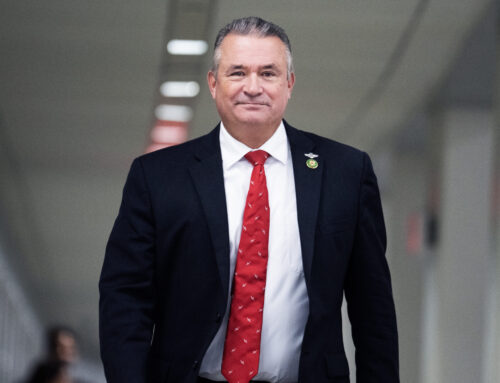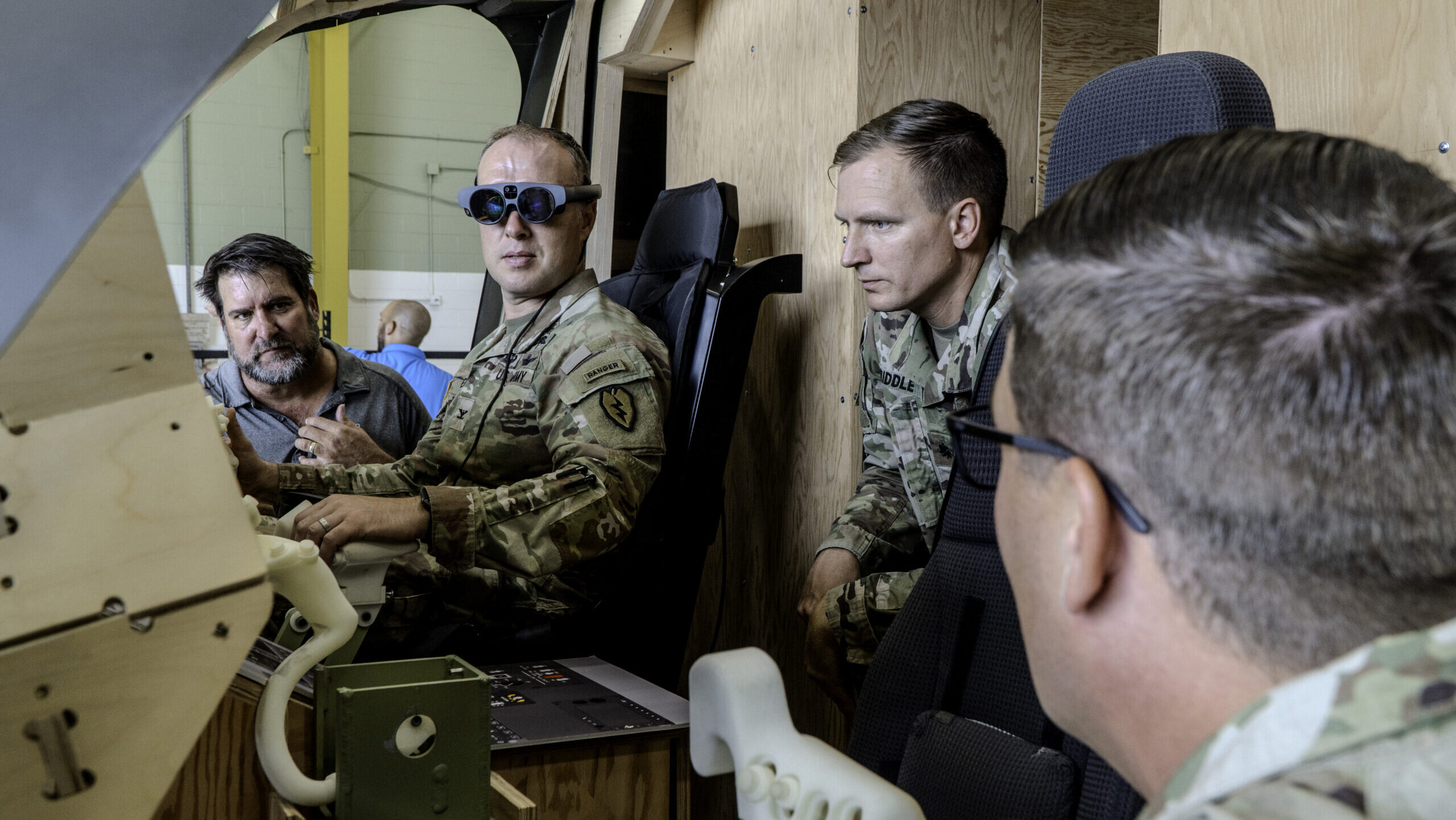A Swedish NH90 maritime helicopter on display at the Uppsala Air Show (Breaking Defense)
BELFAST — After a series of high-profile toubles, the NH90 multirole helicopter program is set up for long-term success, built off plans for a future Block 2 upgrade, new commercial sales opportunities, better fleet availability rates, supply chain improvements and reduction in maintenance processes, according to the aircraft manufacturer’s top official.
Cancelled orders, delivery delays, poor availability rates and high operational costs have long damaged the reputation of the platform, but Alex Aloccio, NHIndustries (NHI) CEO, told reporters on Tuesday that he expects it to be “around for at least another 50 to 60 years” and that the program has entered “a very exciting time.”
He referred to the timeframe target as “a fact” not an “ambition” because it correlates to the level of investment customers have placed in the rotorcraft.
“There is plenty of potential left in the platform,” Aloccio added, during an Airbus Helicopters press day held at the company’s production facility in Marignane, France. NHI is a joint collaboration between Airbus, Leonardo and GKN Aerospace/Fokker Technologies. (Breaking Defense accepted travel and accommodation for the trip.)
Aloccio shared that the manufacturer has been in conversation with current NH90 customers for “close to one year” about the new Block 2 upgrade, though “main technologies” have not been agreed.
“We talk about [potentially] increasing the payload of the aircraft, because there’s still some juice left in the airframe, in the engine, dynamic components … and how do we connect the drone,” he noted, referring to the option of introducing manned-unmanned teaming capabilities.
Separately, Belgium, Germany, Italy and the Netherlands signed up for development of the NH90’s Software Release 3 upgrade in June, which includes integration of the new Link 22 datalink, Leonardo’s LEOSS-T Electro-Optical gimbal, sonar equipment and “additional weapons integration,” according to an NHI statement.
Additionally, Aloccio said “lots of commercial opportunities” are available and noted The Netherlands commitment in September to acquire additional NH90s. He not disclose any potential new customers by name.
Supply Chain Turnaround
Opening up on past supply chain problems, Aloccio admitted that “there was a lack of understanding from everyone, including ourselves, on the speed at which we need to deliver and to resupply … parts into the system,” and that “we were a bit undersized against what was expected from our customer.”
As part of a company-wide improvement push, with availability rates as the “main topic” to resolve, individual action plans for suppliers have been established, in addition to an effort to simplify aircraft maintenance plans.
NHI also increased speed of deliveries for Priority Item List (PIL) — critical supply chain items — by 15 percent last year and is on track to hit a target of another “15-20 percent” again by the end of this year, said Aloccio. A number of the PIL items are manufactured by companies belonging to NHI, effectively meaning supply chain issues are, in part, the manufacturers’ own fault.
He noted “limiting factor” parts cover items like main gear boxes, blades, mission equipment and cargo hooks.
The industrial mistakes of the past have cost NHI dearly in recent years. Australia, Norway and Sweden have all decided to walk away from NH90 acquisitions even after they had received aircraft.
In a stinging assessment upon axing the program in June 2022, Norway’s Defense Minister Bjørn Arild Gram, said, “Regrettably, we have reached the conclusion that no matter how many hours our technicians work, and how many parts we order, it will never make the NH90 capable of meeting the requirements of the Norwegian Armed Forces.” Oslo vowed at the time to fight for compensation worth nearly 5 billion kroner ($525 million); NHI said then it refuted Norway’s allegations and said the termination of the agreement was “legally groundless.”
Let The Court Decide
During the recent trip Aloccio revealed that mediation between NHI and Norway has since “failed,” resulting in the initiation of legal proceedings. “They took us to court and we are taking them to court,” he said, suggesting NHI has put forward a counter claim to Norway’s compensation demand.
“There are two claims which are merged into one claim,” added Aloccio. “So in the end, it’s just one big dispute and and it’s just one judge.” An Oslo court will begin hearing the case “next year,” he added.
Norway’s NH90 fleet, 14 aircraft in total, have not flown since the decision was made to cancel the acquisition, according to Aloccio, and they remain in storage.
Elsewhere, a buy back plan with Australia to return 4,000 MRH-90 Taipan (NH90 TTH) parts, valued at €250 million ($273 million) has commenced. Around 300 parts have so far been sent back to NHI, said Aloccio.
The move was prompted by Canberra’s decision to prematurely retire its MRH-90 Taipan (NH90 TTH) fleet, after initially grounding it when an aircraft involved in the Exercise Talisman Sabre crashed off the Whitsunday Islands in July 2023.
RELATED: Australia reveals why it isn’t sending grounded Taipan helicopters to Ukraine
In the case of Sweden, NH90 availability rates have significantly improved, Aloccio said. He specifically stated that flight hours of the Nordic nation’s fleet jumped by “60 percent” between January and August 2022 and the same period this year.
Even so, there is no sign at the moment that Stockholm will go back on plans to cancel the program, driving forward instead with the acquisition of an additional 12 Lockheed Martin UH-60M Black Hawk helicopters.









